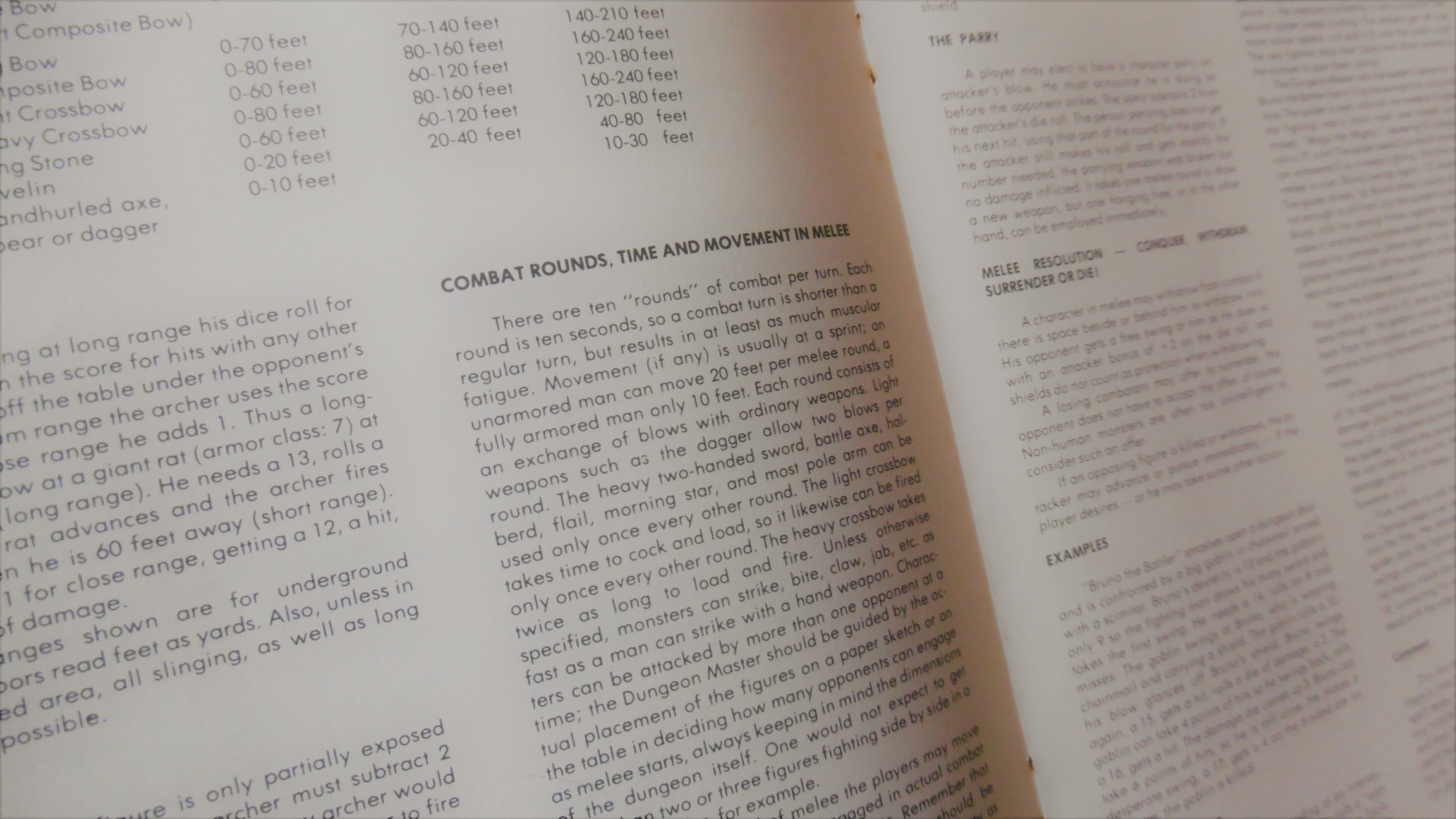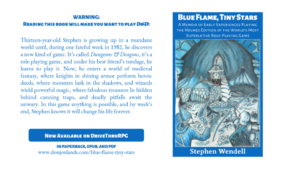I hesitate to put into words what I mean by “the Holmes spirit.” Certain qualities of the brief rules booklet set it apart from other D&D editions. Holmes’s simplicity is one. Keeping—or rather reinstating—d6 weapon damage from OD&D is an example. Another example, while some might use the term incomplete, I count the lower-level limitation within its simplicity.
The Dexterity-based initiative system, simpler and faster than rolling for it, is unique among editions. The Editor sourced it, not from OD&D but from a set of house rules that have come to be known as the “Perrin Conventions.” Revisited and revised 23 years later though it was, we hardly recognize its influence on 3rd Edition.
The Bluebook’s special demand for house rules lends, at the same time, to its simplicity as well as its uniquity. That it was intended only to introduce players to AD&D, and that we desire to—and do—play it as our own necessarily customized version of the game, also make it unique.
In that regard, the 48-page rulebook serves as the research question of a game designer’s thesis project: The goal is to turn these rules into a complete game. Each of us sets the criteria for a successful defense.
For, while simple and unique are the best adjectives to describe my own sense of it, more likely, the Holmes spirit means something different for each one of us who learned how to use those crazy dice reading text from eggshell pages in a pale blue book.

The original text of this article erroneously cited Warlock, a 1975 D&D supplement, as Holmes’s source for the Dexterity-based initiative system. In fact, the source is likely the “Perrin Conventions,” a reprint of which you can find on Christopher Helton’s Dorkland! blog (the Dexterity section). The text above has been corrected. [18:10 19 May 2022 GMT]

Pingback: Ability Score Modifiers in the Great Halls of Pandemonium – DONJON LANDS